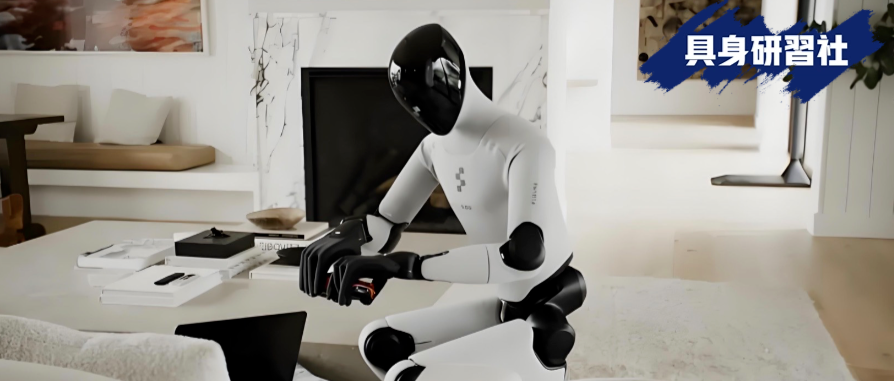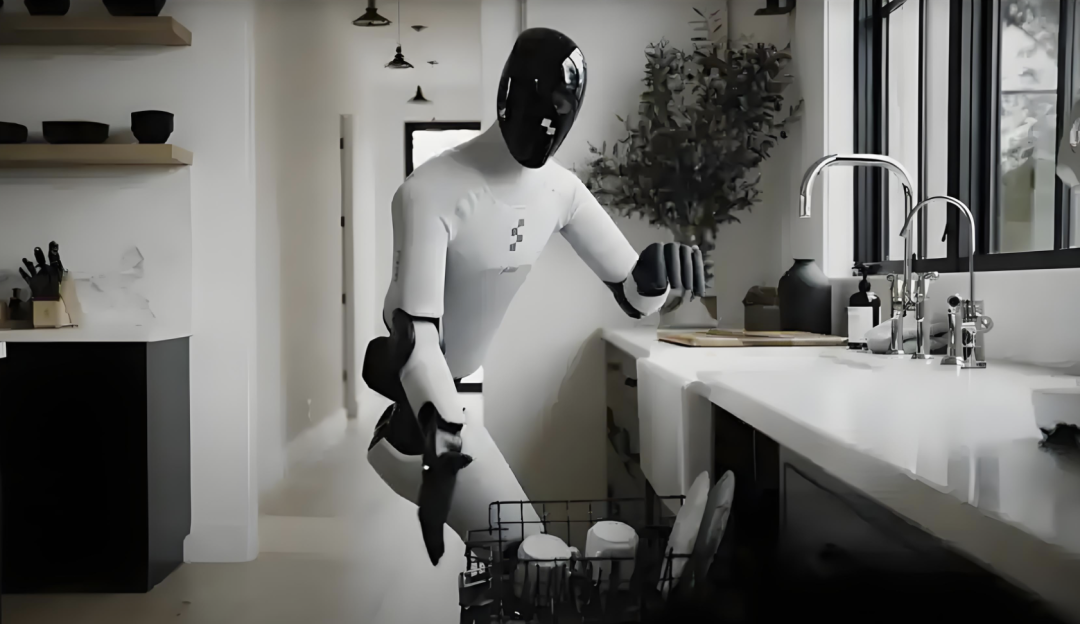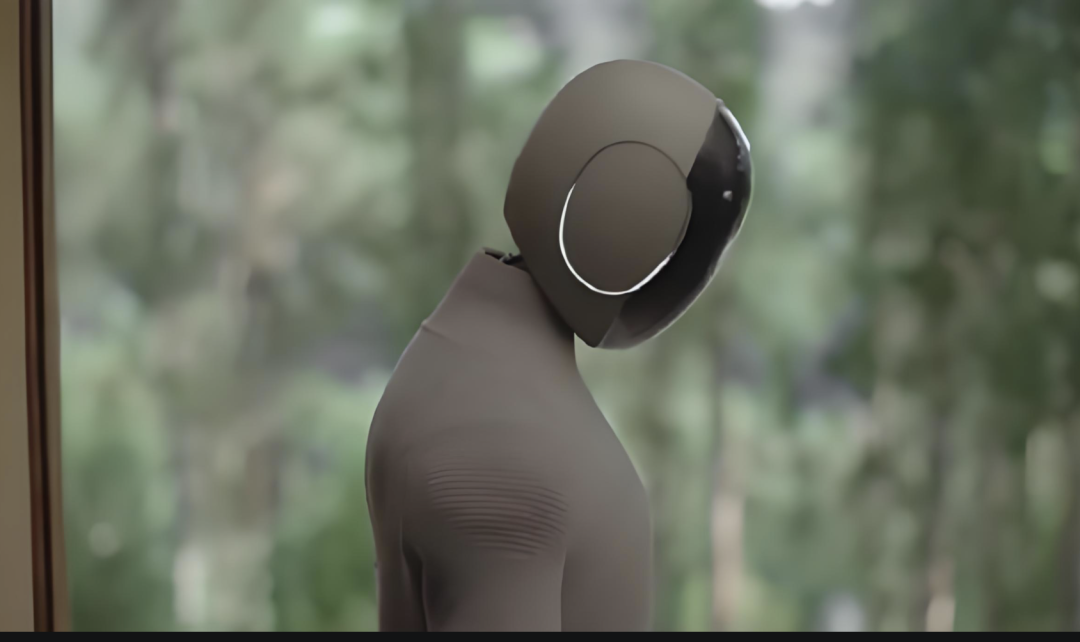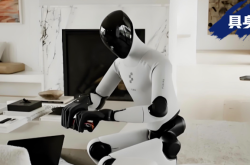Has the Turning Point for Humanoid Robots in Domestic Settings Arrived?
![]() 10/19 2025
10/19 2025
![]() 463
463

As the term "accelerated deployment" becomes increasingly prevalent in the industry, it is even more vital to be wary of the "slogan-fueled hype" of public relations narratives that may overshadow genuine signals of technological advancement. The true turning point for domestic scenarios has never been about a "one-off success" showcased on manufacturers' demonstration stages; rather, it hinges on a systemic breakthrough in technological maturity, cost control, and scenario adaptability.
Editor: Lv Xinyi
The projected landscape for the humanoid robot sector in 2025 has undergone a dramatic transformation. In the first half of the year, the industry consensus still viewed domestic scenarios as the "ultimate battleground," with a 5-to-10-year timeline for implementation already considered a breakthrough akin to a "technological explosion." Some practitioners even candidly stated that it might remain out of reach for two decades. However, as the year draws to a close, leading manufacturers have ramped up their efforts, collectively demonstrating the technological feasibility of domestic robots. Domestic scenarios, once deemed "distant," now appear to be emerging from the fog.
Has the deployment process of domestic robots truly reached a historic turning point?
At the recently concluded 2025 China Mobile Global Partners Conference, Wang Xingxing's statement was highly representative: "From last year to this year, we have focused more on the motion aspect, but our core goal has always been to seamlessly integrate robots into daily life." The "living scenarios" he refers to encompass diverse fields such as households, services, and industries, signaling a clear shift in technological focus towards practical applications.
Across the ocean, technological advancements are progressing even more rapidly: The highly anticipated Figure 03 is directly defined as "born for domestic scenarios," with its functional positioning aimed at meeting essential household needs. Li Feifei, a leading authority in the AI field, has initiated the "2025 BEHAVIOR Challenge," constructing a technological arena centered around complex household tasks, directly targeting the core capability bottlenecks in domestic services.

Image source: Figure
Technological validation and scenario layout in the domestic sector are progressing almost simultaneously: Qianjue Technology and Accelerated Evolution have completed in-depth joint validation, with their robot, Booster T1, achieving long-duration autonomous decision-making and execution of multiple complex tasks in domestic scenarios. Earlier, Fourier launched the GR-3 companion robot, while UBTECH forged a long-term, in-depth strategic partnership with Easyhome, focusing on the intelligent upgrading of domestic scenarios. Behind these series of actions, the once purely technological concept of domestic service robot scenarios is rapidly approaching commercialization.
Delving into the industry logic, domestic scenarios essentially represent the "ultimate ToC (To Consumer) trial" for robot technology. The personalized demands and unstructured nature of these scenarios directly reflect the core capabilities required for robots to evolve towards "general intelligence." This explains why, in the first half of 2025, most companies remained tight-lipped about the timeline for domestic scenario implementation. However, the trillion-dollar market potential of domestic scenarios is sufficient to drive sustained industry investment.
Amidst the fervor, rational industry voices have not been absent. The high barriers to entry in domestic scenarios have long been a consensus in the industry, with technological, cost, and compliance challenges remaining fundamentally unresolved:
Leju's assessment directly points to the core barriers: "When humanoid robots reach a doctoral-level intelligence and their prices are as affordable as household appliances..." This statement highlights the dual bottlenecks of intelligence and cost control.
UBTECH offers a more specific timeline prediction: "By 2028, robots are expected to acquire sufficient task operation and scenario generalization capabilities, gradually entering some domestic scenarios. It is anticipated that they will start with needs such as domestic companionship and eventually expand to comprehensive domestic services..." This reveals the gradual nature of scenario penetration.
Unitree emphasizes the comprehensive challenges of scenarios: "Domestic scenarios impose very high requirements on robots, whether at the technological, ethical, or safety level. The barriers far exceed imagination," highlighting the complexity of deployment issues.
As "accelerated deployment" becomes a high-frequency term in the industry, it is even more crucial to be wary of the "slogan-fueled hype" of public relations narratives that may overshadow genuine signals of technological advancement. The true turning point for domestic scenarios has never been about a "one-off success" showcased on manufacturers' demonstration stages; rather, it hinges on a systemic breakthrough in technological maturity, cost control, and scenario adaptability. Only by penetrating beyond surface-level actions and returning to the essence of the industry for multidimensional analysis can we avoid misjudgments and discern the true path for humanoid robots to enter households.
What does it take to become a robot butler?
The evolutionary path of humanoid robot scenarios generally follows the sequence of factories-services-households. This represents a gradual shift in interaction objects from objects to humans and in operational scenarios from structured to unstructured environments, accompanied by a corresponding transformation in robot requirements from "tools" to "companions." This implies that robots must ensure safety and approachability in human contact while being capable of autonomously completing more complex operations in open scenarios.
In this evolutionary process, the first term that cannot be bypassed for robots entering domestic scenarios is "safety." If a robot is to accompany children or care for the elderly, there is no overestimating the tolerance for errors when it comes to personal safety. Nearly all doubts and fears stem from whether it might harm humans. We have seen numerous videos of "robots falling" or "robots stepping on a little girl." Even a mere brush with a child by an iron object can have unbearable consequences. Therefore, we observe that the first design step for most robots targeting domestic scenarios is a complete makeover. Norway's humanoid robot company 1X's NEO, the US's Figure 03, and Fourier's GR-3 launched domestically all utilize soft materials such as fabric or foam cotton.

Image source: 1X
However, these static, passive contact protections are just the first step. In daily life, when robots perform household chores, the success rate of operations needs improvement. If a robot picks up a set of dishes only to drop them or mishandles a fragile electronic device or luxury watch, varying degrees of property and personal harm can occur. Yet, the reality is that while robots must possess a high success rate, bad cases frequently emerge. These bad cases are essentially attributable to stage-specific "technological immaturity." The current technological bottleneck precisely lies in data utilization and model architecture.
While the industry is awed by Figure 03's domestic potential, dissecting its recent moves reveals that in the recently completed Series C funding, Figure deeply bound with an investor, Brookfield. This is an asset management company with 100,000 residential units in its portfolio. Subsequently, Figure announced a collaboration with Brookfield, which can provide Figure with a massive amount of real-world data on human-like navigation and operations in various household environments. This data is precisely the key to enabling their robots to move and operate freely in domestic scenarios in the future. Li Feifei's recent "Household Challenge" follows a similar logic, being dubbed the "ImageNet moment" in the field of embodied intelligence. The reason is its attempt to address the scarcity of training data similar to that in the computer vision field.
However, beyond data, there is the issue of how models can unleash the potential of data. As Karol Hausman, co-founder and CEO of Physical Intelligence, stated, "The biggest bottleneck is that the success rate of these models has not yet reached the necessary level. This is not merely a matter of data collection; it seems that some algorithmic improvements are also needed. I believe that even if we had an unlimited amount of data, we could not achieve a 100% success rate in complex, long-duration, and highly dexterous tasks with existing algorithms."
Now, let us temporarily set aside these technological disagreements. The third aspect robots must address when entering households is product detail improvement, which relates to the product completion level during actual deployment. We observe that robots entering households generally have a reduced volume, whether they are quadrupedal or humanoid. It is reported that Figure 03 has a 9% weight reduction and a significantly smaller volume, facilitating movement within household spaces, while its synchronous wireless charging ensures endurance. 1X's NEO is designed from the outset to ensure gentle and quiet movements. These are all improvements necessary for entering households. Of course, we can also envision whether the robot's thermal management technology can be organically combined with its surface temperature, making the robot "warm." Furthermore, can the robot provide life recordings and firmly remember them, acting as a mobile camera device and deeply participating in life rather than being a mere bystander? These qualities represent the warm and humanistic aspects needed for robots to adapt to domestic scenarios beyond the hardcore skills.
Early Days for Domestic Entry
Robots capable of entering households are still in training. The biggest issue currently is the high acceptance threshold for users. From a technological standpoint, the success rate of robots performing tasks must approach 100% infinitely. However, the current industry perspective is that both data and model architecture are insufficient, making it unattainable in the short term. Wang He, founder and CTO of Galaxy General, stated during a small media event at WRC that the core reason for the current weaker stage of VLA (Vision-Language-Action) and other multimodal models compared to language models is the scarcity of text-image data and action data, resulting in insufficient visual-based action operation capabilities.
In addition to traditional data, Lu Cewu, co-founder of Qiongche Intelligence, also stated that VLA is like a plain hotpot, currently only able to serve a limited number of people with its plain broth. To serve more people, we need to constantly add ingredients, i.e., additional information. This information might include force feedback data or other perceptual data. In short, data has become a significant bottleneck for robots entering households.
Of course, some argue that data is just one aspect. As Wang Xingxing said, "the model's architecture itself is not good enough," and "even with a lot of good data for training, it cannot be effectively utilized."
Besides the technology not yet meeting domestic thresholds, safety remains unguaranteed. This guarantee not only refers to whether the robot can avoid making mistakes, as mentioned earlier, but also encompasses the social issue of how to protect user rights in case of errors. It involves the attribution of responsibility in robot safety accidents, for which relevant laws have not yet been enacted. However, this aspect can refer to the grading standards and responsibility divisions in autonomous driving.
Furthermore, there are two unspoken user acceptance barriers that require additional emphasis: ordinary users' skill levels and the uncanny valley effect.
On the one hand, the complexity of robots, in Musk's view, surpasses that of automobiles, making their use a process that requires training. Just as drones can be purchased or "connected to," there is a significant skill difference between ordinary users and trained, certified, or geek enthusiasts. Currently, the same model of robot has already shown a "usage gap" similar to that between computers and smartphones among different user groups. If such products are to be deployed in domestic scenarios, this gap needs to be bridged. Additionally, if robots are compared to vehicles, the current situation is akin to selling a vehicle easily, but using it still requires training. Users might need to obtain a "robot driver's license." Currently, this area remains a blank slate. Combined with the safe use of robots, this should not be solely the user's responsibility. Can companies develop more user-friendly robots? Do regulations require certification and standardization for robot use?
On the other hand, the uncanny valley effect is unavoidable, and this delicate "degree" is difficult to grasp. In the process of robots entering households, they are bound to intervene in a more approachable manner. If robots always retain their differences from humans and exercise restraint, a "separation" will always exist. Conversely, products like Clone Robotics from the Polish bionic human company, which pursue extreme bionics and resemble those from "Westworld," ultimately plunge people into the panic of "excessive human-likeness." This paradox always exists.
To sum up, the robots we currently encounter in domestic settings, such as Figure 03, can be likened to 'students who have amassed a wealth of knowledge but have not yet earned their diplomas.' When it comes to seamlessly integrating into human daily life and carrying out household tasks, numerous issues remain unresolved. These include problems related to model and data accuracy, safety and regulatory compliance, usability, and psychological acceptance. Additionally, factors like cost and the potential for job substitution, which were not discussed in the article, also pose significant challenges. All these aspects have yet to reach a level that would make them widely acceptable to users. Technological fantasies often overshadow the practical realities of these scenarios. Perhaps, the current 'hype around inflection points' serves more as an indicator of the industry's accelerated growth rather than the culmination of corporate endeavors. For household robots to genuinely become a staple in ordinary households, they must not only surmount technological hurdles in data processing, algorithm development, and safety measures but also make the leap from 'machine-centric thinking' to 'human-centric thinking.'
At present, the sector is brimming with excitement but is somewhat lacking in tangible progress. After all, the ultimate arena that humanoid robots are destined to enter is the 'final frontier' of domestic life.







